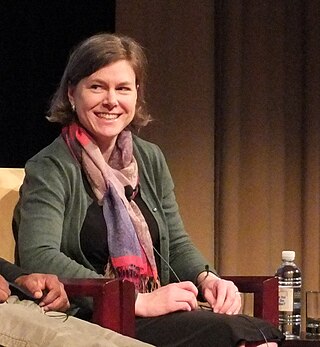A comic strip is a sequence of cartoons, arranged in interrelated panels to display brief humor or form a narrative, often serialized, with text in balloons and captions. Traditionally, throughout the 20th and into the 21st century, these have been published in newspapers and magazines, with daily horizontal strips printed in black-and-white in newspapers, while Sunday papers offered longer sequences in special color comics sections. With the advent of the internet, online comic strips began to appear as webcomics.

A cartoon is a type of visual art that is typically drawn, frequently animated, in an unrealistic or semi-realistic style. The specific meaning has evolved, but the modern usage usually refers to either: an image or series of images intended for satire, caricature, or humor; or a motion picture that relies on a sequence of illustrations for its animation. Someone who creates cartoons in the first sense is called a cartoonist, and in the second sense they are usually called an animator.

The National Cartoonists Society (NCS) is an organization of professional cartoonists in the United States. It presents the National Cartoonists Society Awards. The Society was born in 1946 when groups of cartoonists got together to entertain the troops. They enjoyed each other's company and decided to meet on a regular basis.

Print syndication distributes news articles, columns, political cartoons, comic strips and other features to newspapers, magazines and websites. The syndicates offer reprint rights and grant permissions to other parties for republishing content of which they own and/or represent copyrights. Other terms for the service include a newspaper syndicate, a press syndicate, and a feature syndicate.

Harvey Kurtzman was an American cartoonist and editor. His best-known work includes writing and editing the parodic comic book Mad from 1952 until 1956, and writing the Little Annie Fanny strips in Playboy from 1962 until 1988. His work is noted for its satire and parody of popular culture, social critique, and attention to detail. Kurtzman's working method has been likened to that of an auteur, and he expected those who illustrated his stories to follow his layouts strictly.

Milton Arthur Paul Caniff was an American cartoonist known for the Terry and the Pirates and Steve Canyon comic strips.

King Features Syndicate, Inc. is an American content distribution and animation studio, consumer product licensing and print syndication company owned by Hearst Communications that distributes about 150 comic strips, newspaper columns, editorial cartoons, puzzles, and games to nearly 5,000 newspapers worldwide. King Features Syndicate also produces intellectual properties, develops new content and franchises, like The Cuphead Show!, which it produced with Netflix, and licenses its classic characters and properties.

Jen Sorensen is an American cartoonist and illustrator who creates a weekly comic strip that often focuses on current events from a liberal perspective. Her work has appeared on the websites Daily Kos, Splinter, The Nib, Politico, AlterNet, and Truthout; and has appeared in Ms. Magazine, The Progressive, and The Nation. It also appears in over 20 alternative newsweeklies throughout America. In 2014 she became the first woman to win the Herblock Prize, and in 2017 she was named a Pulitzer Finalist in Editorial Cartooning.

Noel Douglas Sickles was an American commercial illustrator and cartoonist, best known for the comic strip Scorchy Smith.
Notable events of 2006 in comics.

Terry LaBan is an alternative/underground cartoonist and newspaper comic strip artist. He is known for his comic book series Cud, and his syndicated strip Edge City, created with his wife, Patty LaBan, a couples and family therapist.

Frances Edwina Dumm was a writer-artist who drew the comic strip Cap Stubbs and Tippie for nearly five decades; she is also notable as America's first full-time female editorial cartoonist. She used her middle name for the signature on her comic strip, signed simply Edwina.

Frank Springer was an American comics artist best known for Marvel Comics' Dazzler and Nick Fury, Agent of S.H.I.E.L.D.. As well, in collaboration with writer Michael O'Donoghue, Springer created one of the first adult-oriented comics features on American newsstands: "The Adventures of Phoebe Zeit-Geist" in the magazine Evergreen Review. A multiple winner of the National Cartoonists Society's Reuben Award, Springer was a president of the Society and a founding member of the Berndt Toast Gang, its Long Island chapter.

Howard "Howie" Post was an American animator, cartoonist, and comic strip and comic book writer-artist.

Gladys Parker was an American cartoonist for comic strips and a fashion designer in Hollywood. She is best known as the creator of the comic strip Mopsy (1929-1965), which had a long run over three decades. Parker was one of the few female cartoonists working between the 1930s and 1950s.

Teena is a comic strip about a teenage girl, created by Hilda Terry. It ran from July 1, 1944, to 1963, distributed by King Features Syndicate.

Harry William Haenigsen was an American illustrator and cartoonist best known for Penny, his comic strip about a teenage girl. He also illustrated for books, magazines and advertising.
Although, traditionally, female comics creators have long been a minority in the industry, they have made a notable impact since the very beginning, and more and more female artists are getting recognition along with the maturing of the medium. Women creators have worked in every genre, from superheroes to romance, westerns to war, crime to horror.

Cartoon Crossroads Columbus (CXC) is an annual, free, four-day celebration of cartooning and graphic novels held in Columbus, Ohio. Venues for the festival include Ohio State University's Billy Ireland Cartoon Library & Museum, Hale Hall, and the Wexner Center for the Arts; and downtown Columbus' Columbus Metropolitan Library, the Columbus Museum of Art, and the Columbus College of Art and Design.


















